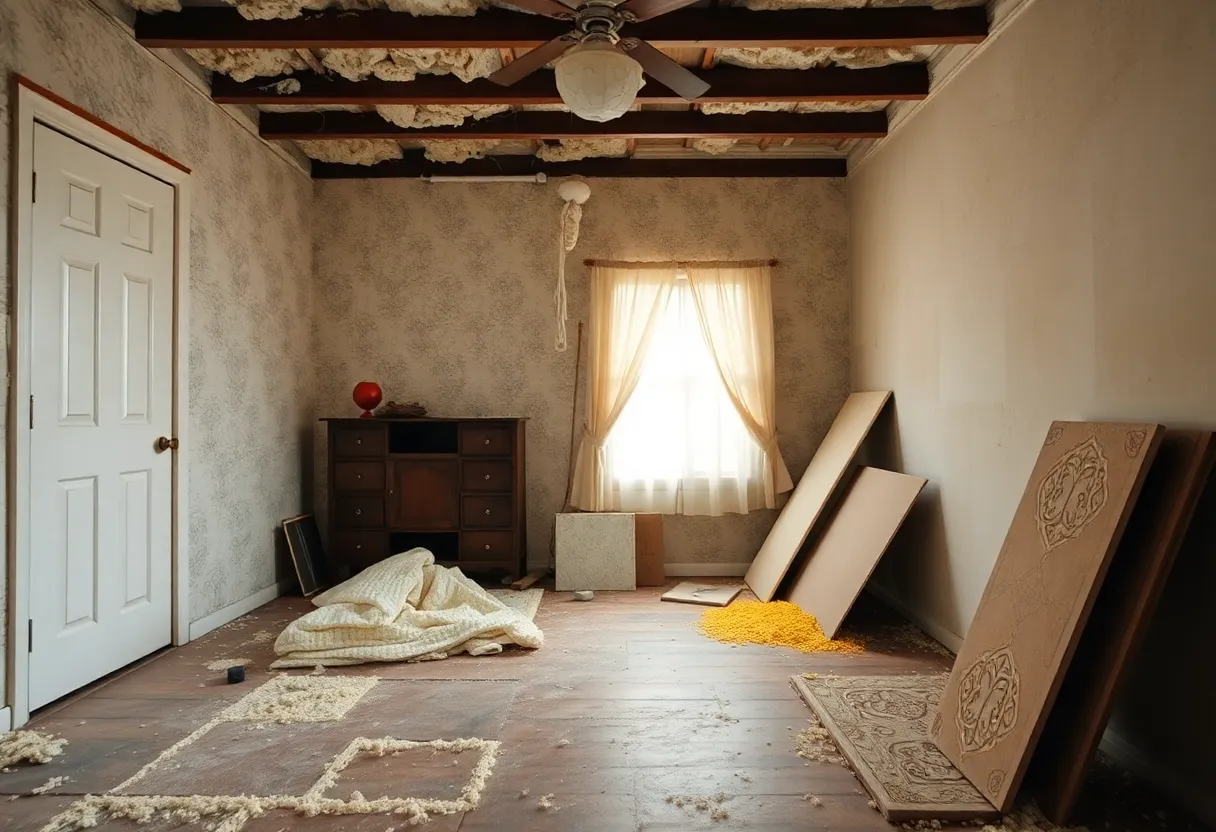News Summary
This article explores the lasting health effects and risks of asbestos exposure faced by military veterans, and the legislative efforts to address these issues.
The Dark Legacy of Asbestos Exposure Among Veterans: A Continual Struggle
Asbestos, a mineral famed for its fire-resistant properties, saw widespread use in both civil and military constructions during the mid-20th century, particularly in the wake of the Great Depression and World War II. From the 1920s onward, this seemingly innocuous substance was applied extensively in buildings, ships, and various military facilities, predominantly due to its heat-resistant advantages that were believed to provide unparalleled safety.
A Boom in Usage: The Asbestos Era
By the 1970s, the use of asbestos in America had skyrocketed to a staggering 1,400 million pounds annually, largely driven by the U.S. Military. Military veterans, especially those in the Navy, were on the front lines of this widespread exposure. Navy Liberty Ships, constructed during World War II, were notorious for their heavy loading of asbestos materials. At the time, the long-term health repercussions of this exposure were largely unknown—an ominous reality that would unfold over the coming decades.
Health Consequences Remain Hidden
The inhalation or ingestion of asbestos dust does not trigger immediate adverse health effects; rather, it is a slow and insidious process that complicates research efforts to establish a clear causal link between the substance and resultant diseases. Initial data from the 1940s hinted at a potential connection between asbestos and various illnesses, yet it took until the regulatory advances of the 1970s for any substantial protections to be put in place.
Veterans at Increased Risk
Troubling statistics reveal that veterans who served in the Army and Air Force after the year 1950 are six times more likely to develop mesothelioma, a rare and deadly cancer associated with asbestos exposure. Studies underline that these former military personnel are 50% more likely to develop lung cancer than civilians, with many of these cases traced back to asbestos exposure during the atomic era and military service.
Alarming Statistics from Newport Beach
Newport Beach, California, has emerged as a troubling epicenter in this ongoing crisis, showcasing the highest recorded levels of asbestos-related mortality. From 1999 to 2017, the region counted a staggering 27,080 cases of asbestos-related deaths. Meanwhile, Orange County documented an additional 2,374 cases linked to this toxic mineral. The presence of numerous Navy and Air Force facilities in close proximity to Newport Beach has unquestionably contributed to these dire statistics.
The Continuing Threat
Currently, 3,377 veterans are residing in Newport Beach, many of whom may have been unwittingly subjected to asbestos during their terms of service. Even now, the risk of exposure persists due to older structures that may harbor asbestos materials combined with renovation and demolition activities that stir up dangerous dust. A decommissioned Air Force hangar, which caught fire two years back, released hazardous asbestos fibers roughly 15 miles from Newport Beach, underscoring the ongoing threat that older constructions pose.
The PACT Act: A Beacon of Hope or Another Bureaucratic Hurdle?
Recent legislative efforts have acknowledged the risks associated with asbestos exposure. The PACT Act, enacted in 2022, classifies asbestos as a presumptive causal agent for lung cancer, mesothelioma, and asbestosis. This is a positive step aimed at streamlining access to benefits and healthcare for affected veterans. However, challenges remain. Significant issues in claims processing, such as the mismanagement of claims by the VA, resulted in a $7 million misallocation due to incorrect assessments of effective dates.
Demand for Advocacy and Inclusive Policies
Delays and stagnated claim processing times are obstructing the effectiveness of these laws that aim to protect our veterans. Many toxic agents, including PFAS and volatile organic compounds (VOCs), remain excluded from presumptive benefits despite mounting evidence of their harmful effects. Advocacy for a more responsive healthcare policy tailored to veterans is essential in aligning current scientific findings about toxic exposures with actionable healthcare solutions.
As this tragic saga continues, the plight of veterans exposed to asbestos underscores an urgent need for a concerted effort to raise awareness and push for comprehensive policy reform that adequately addresses their health and wellbeing. While the past has wrought lasting consequences, collective action can pave the way toward a safer future for those who served and sacrificed.
Deeper Dive: News & Info About This Topic
HERE Resources
The Truth Behind BAP1 Mutations and Mesothelioma: Clearing Up Misconceptions
Los Angeles Wildfires: A Hidden Danger of Asbestos Contamination Looms Over Cleanup Efforts
Libby Asbestos Clinic in Crisis: Federal Court Hearing Sparks Controversy
The Lingering Danger of Asbestos: A Call for Action
Clinic Closure Leaves Libby Residents in the Lurch
The Looming Danger: Asbestos Regulations in Jeopardy
Potential Asbestos Ban Under Review as Health Risks Persist
EPA Seeks Pause in Asbestos Regulation Litigation Amid Industry Concerns
School District of Philadelphia Faces Federal Charges Over Asbestos Violations
Mounting Concerns Over Asbestos Use in America
Additional Resources
- Newport Beach Independent: Veteran Asbestos Exposure Risk
- Wikipedia: Asbestos
- Newport Beach Independent: Segerstrom Center Fundraiser
- Google Search: Asbestos Exposure Veterans
- Sokolove Law: Navy Asbestos Exposure
- Encyclopedia Britannica: Mesothelioma
- Pilot Online: Newport News Jury Awards
- Google News: Asbestos Related Deaths



















